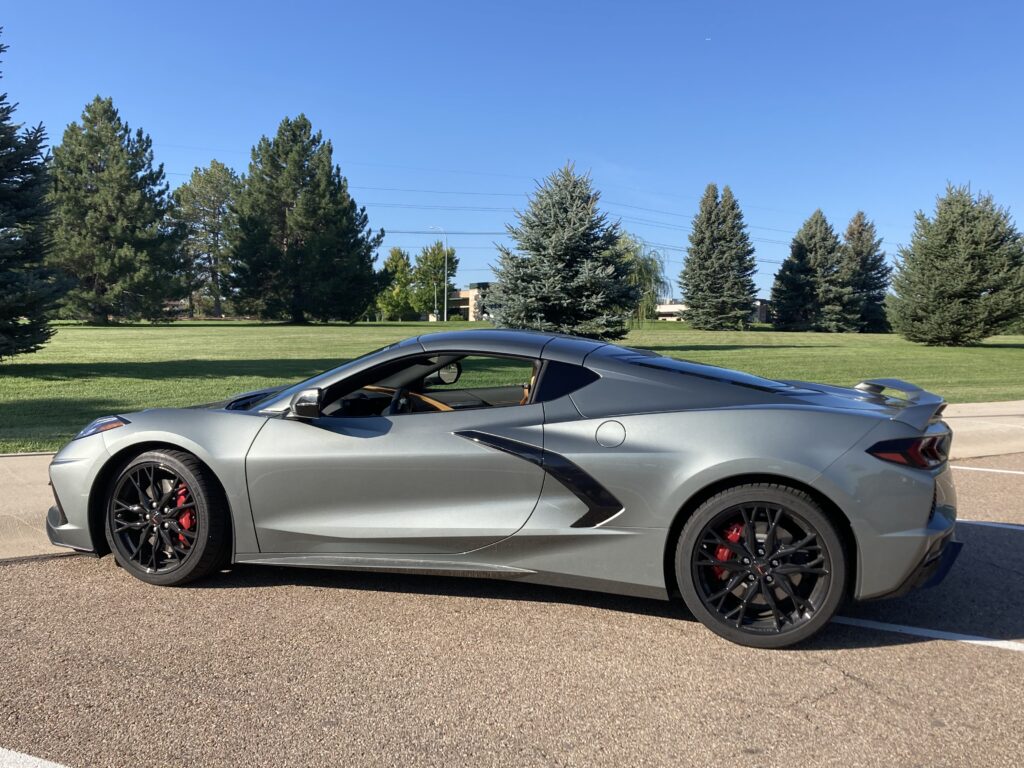
In its 70th year, the Chevy Corvette defies the combination of aging, on the one hand, and the rush to electrics, at the other.
The opportunity to drive the 2023 Corvette Stingray Coupe 2LT reminded me of the excellent job of refinement Chevrolet has accomplished with the iconic sports car.
Sporting a Z51 performance package, the new Vette is beautifully sculpted with finely finished interior, is very quick, its roof panel can be removed, and, it is, perhaps, the most comfortable of this class of swift cars.
Roaring performance comes from a 495-horsepower/470-torque, 6.2-liter mid-engine V-8, mated to an 8-speed dual-clutch transmission. Power direction runs from the driver rearward to the engine, conveniently situated at the rear-drive axle.
Z51 firms up suspension, with Brembo brakes and Michelin Pilot Sport 20s at the rear, 19s in front. No need to angle into the driveway to avoid scraping bottom of air dam; push a button and the Vette’s front is lifted several inches for clearance.
Today’s super performance is a contrast with the very slow launch the Corvette experienced 70 years ago. I remember, for I was a high schooler when it was introduced in ’53. Production didn’t begin until June; that was kind of late for a ’53 model, and only 300 were built.
The following year, after production was moved from Flint, Mich., to St. Louis, only 3,600 ‘54s were built, and many sat unsold on dealer lots by year’s end. For all its racy looks, the Vette had little under the hood – a 150-horsepower, 6-cylinder engine and 2-speed Powerglide automatic transmission.
Ford in 1955, with its new two-seater sports car, the Thunderbird, with sales of 16,000 nearly blew away the Corvette. But Ford was concerned with other models, such as the Edsel and a retractable hardtop, and let the T-Bird two-seater grow into a four-passenger auto, and, you know the rest of that story. There is no T-Bird today.
In the meantime, Chevy stayed the course, installing a V-8 in the Vette in ’55, adding a Stingray style a few years later, and was on its way to creating “the American sports car.”
I was one of 1,200 persons who filed in out of the rain at the old Russell Industrial Center in Detroit on the night of Jan. 13, 2013, for the unveiling of the new 2014 Corvette, and revival of the use of the Stingray name. It was the eve of the North American International Auto Show. Such a crowd, shoulder to shoulder much of the evening.
The 2023 Corvette drew attention in Johnstown parked at the home of Dale and Sandy Wells following a golf tourney earlier in the day. Among attendees, Steve Chmelka asked at the right time and enjoyed a ride, proclaiming it “a brilliant sports car and priced somewhat below most others.”
Absorbing $6,345 for the Z51 performance package and $2,260 for the front-lift adjustable height raised sticker price to $83,965 from a base of $69,200.
Among sidelights: Minda Carmann, a friend and former workmate of mine, and her parents-in-law Ken and Kathy Carmann liked the looks of the new Vette in a short session with Jan and me in Brighton; EPA estimate is 16/24, my overall average was 17.3; the Stingray won’t shift into gear until driver seat belt is engaged; the rear trunk area is large enough for a set of golf clubs, up-front in the frunk is room for a couple of travel bags.
